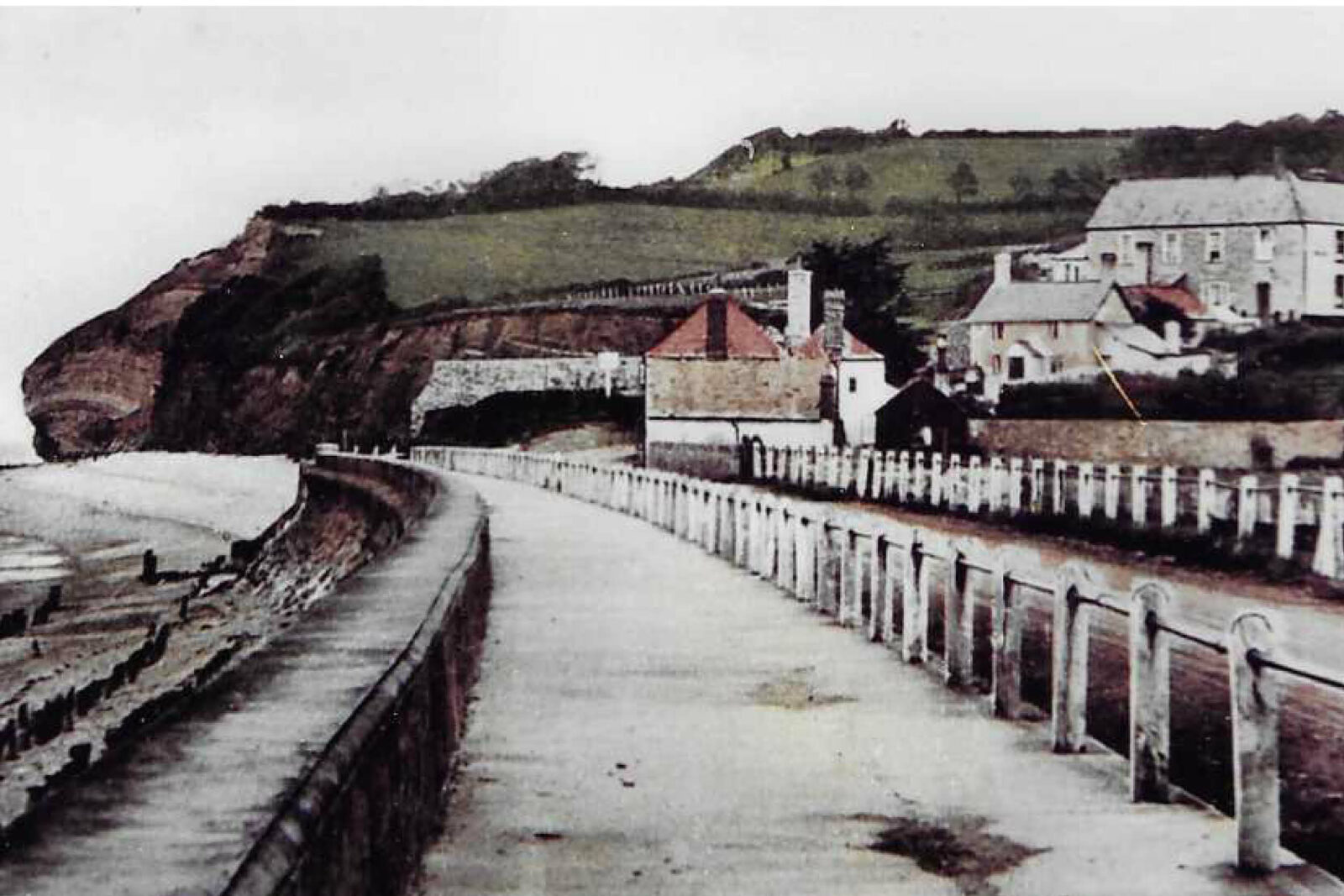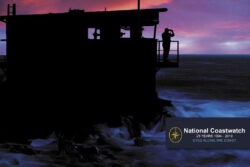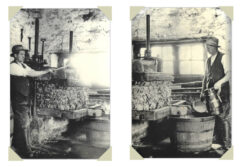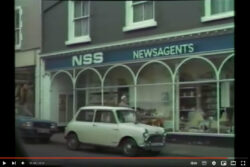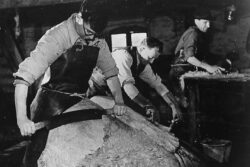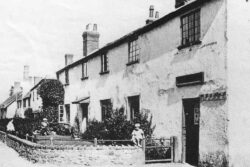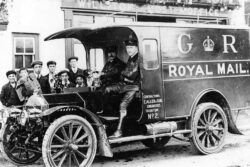Blue Anchor is a small hamlet on the West Somerset Coast between Minehead and Watchet. It has a station on Britain’s longest preserved railway. The line was closed under the ‘Beeching Axe’ in 1971 but thanks to the enthusiasm and determination of those who loved the railway and who set up a private company, West Somerset Railway, it re-opened in 1976.
It has a museum and a busy signal box controlled level crossing which has gates operated by traditional capstan apparatus. Originally this station was the smallest on the line with a single platform, now the upside, until 1904 when the loop was added, a second platform,waiting room and
signal box.
The resort is blessed with magnificent sands and remarkable alabaster cliffs. The most notable feature of the geology at Blue Anchor is the alternating grey and green mudstone containing nodular pink and white gypsum. At low tide the remains of a submerged forest can be seen. This stretch of coast from Blue Anchor to Lilstock is a geological Site of Special Scientific Interest (SSSI)
Lime, gypsum and alabaster have been traded along the cliffs and by 1830 bricks and tiles were being made at Blue Anchor. The brickyard closed in the 1870’s when large scale production of bricks at Bridgwater rendered it uneconomic. However the brick kiln still exists and is the only known example of an updraft kiln to have survived. A coal merchant was established where boats had occasionally discharged since the early C18. This was beneficial when the railway came.
Seaweed or kelp was abundant at one time on the beach at Blue Anchor. This valuable resource was collected in the C17 and C18 and burnt to make potash that was a valuable component in glass making industries such as Bristol Blue.
How did it get the name of Blue Anchor? One cannot be certain. Originally the bay was called Cleeve Bay but later changed. It is said that crews of trading vessels which moored in the bay would find distinctive blue clay sticking to their anchors when they hauled them up and so called it Blue Anchor. The Inn took its name from this. Interestingly there is a far older pub called The Blue Anchor across the estuary at East Aberthaw which dates back to 1380 making it one of the oldest pubs in Wales and it is still trading.
Both the bay and the C17 Inn were the subject of a painting by JMW Turner in 1818 which hangs in the Lady Lever gallery in Port Sunight.
There are two historic pubs in the hamlet The Blue Anchor Inn and The Smugglers Inn. In 1882 50 children, teachers and friends from Alcombe Sunday School went on their annual outing to Blue Anchor. They travelled by train from Dunster and after games on the beach had their tea at the Blue Anchor Hotel. This was near the Blue Anchor Inn which was recorded in 1678 as a house called Blue Anchor standing on a strand beside the coast road. In 1320 a chapel called St Mary ‘by the Sea’ run by the monks of Cleeve Abbey and known to be a site of pilgrimage, stood near the site of the inn.
It was swept away by a landslide in 1452 and replaced by a chapel on an inland site. It is thought that the Inn may have benefitted in the early days from the pilgrims who passed by on their way to visit the new St Mary’s Chapel.
There is a footpath called Monk’s Path close to Home Farm in Blue Anchor. According to a Churchwarden’s account of 1692 petty sessions were held at ‘Blew Anchor’. The original Blue Anchor Inn was replaced but its guest house accommodation continued to trade.
When Rev.Richard Warner made his walking tour of the West Country in 1799 he found
‘a neat little inn called the Blue Anchor threw its doors open and invited me in to refresh myself. Others had been equally pleased with the place as myself and had induced the people of the inn to build a small house for lodgers and fit up a bathing machine for their use’.
Whilst James Savage remarked in his Hundred of Carhampton published in 1830
‘There are some good places for bathing on the shores of this bay, particularly at Minehead and near Blue Anchor rocks where there is an excellent Inn for the accommodation of visitors. At sunrise the view from the lawn and windows of this house is grand and beautiful.’
Sadly as everyone is aware the Blue Anchor Inn has suffered in recent years as a result of cliff erosion but has finally re-opened after works were agreed to put preventative measures in place to save both the Inn and the road from imminent danger.
The Smugglers Inn is reputed to go back to the C17 when it was most probably a farmhouse. It was called Cleeve Villa and became a guest house. By 1871 it was known as The Lodging House but from 1873 to the 1920’s became the Cleeve Bay Villa. During WW2 it housed evacuees. Its name changed yet again to The Old House and by 1972 it had become The Smugglers Inn.
It is reputed to be haunted by the spirit of a young child who often makes its presence known to guests and staff. Witnesses have reported seeing a child-like ghost sitting at a corner table in the bar. The building appeared on an episode of ‘The Real Ghost Hunters‘.
The team experienced some creepy and unusual activity. During the investigation the Landlord Mark Forman said he saw the head of a child behind the bar before running off, which clearly startled him.
Cutlery and napkins neatly laid out on the tables were found to have been moved messily. The investigators also claimed to have captured a voice on their detector which seemed to say the names Craig, Milly, Scott and Anita.
Moveover a toy placed on the bar close to where the ghost had been seen created an electrical response.It is not a malevolent ghost so don’t let this put you off visiting!!
Marshwood Farmhouse in Wood Lane a Grade 11* listed building is Blue Anchor’s finest heritage building historically linked to Cleeve Chapel. Once a manor dating back to the late C15 with C16 & C17 additions and previously part of the Luttrell and then Crown Estates.
Finally, the first camping site in Blue Anchor was established in the 1930’s as was the popular beach side Driftwood Cafe that is so well placed for the station, beach and caravan and camping sites, and which serves on its menu the seaside staple of ‘Fish ‘n Chips’. Very good they are too!
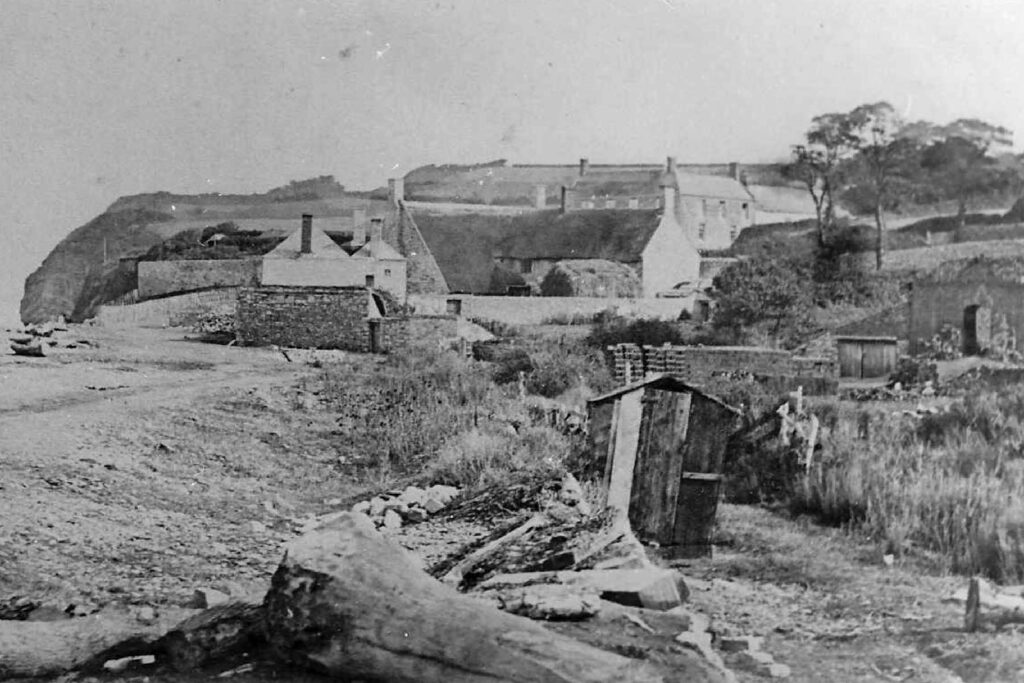
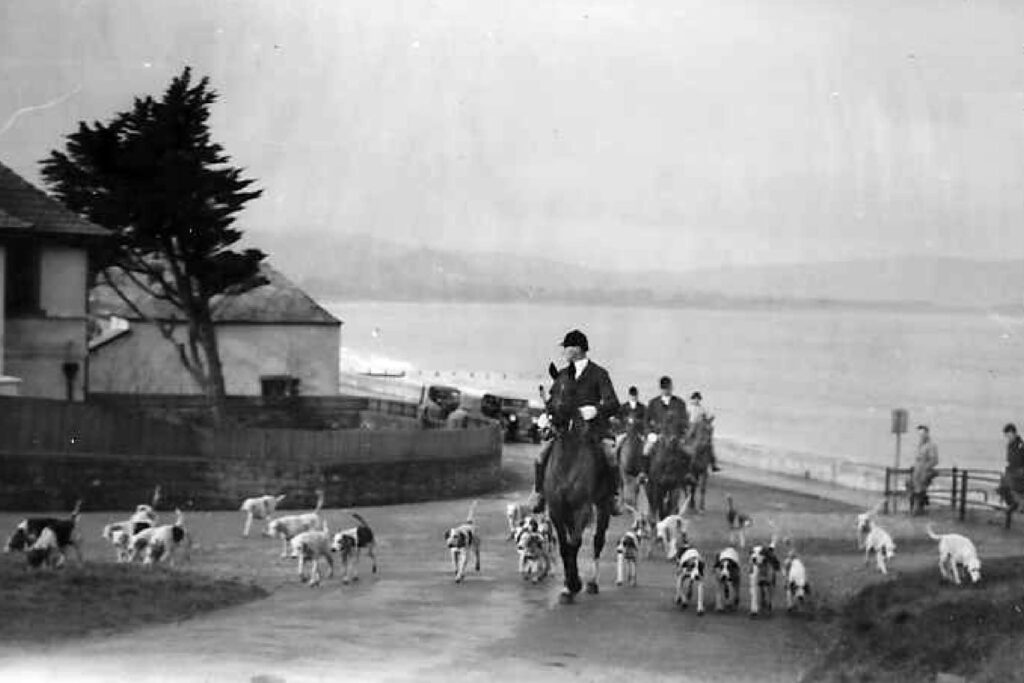
Compiled by Sally Bainbridge on behalf of Minehead Conservation Society.
Buy the book! Minehead & Beyond
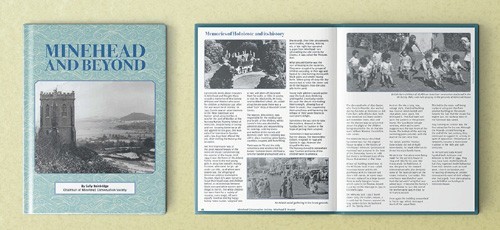
This book is a compilation of articles written for this magazine by Sally Bainbridge on behalf of Minehead Conservation Society. It contains information about the richness of West Somerset’s history; culture; people; heritage; traditions and beautiful and varied landscape. The book costs just £5 and all profits go to Minehead Conservation Society.
Available to buy from AR Computing, Park Lane Home Furnishing (in their Park Lane shop), Minehead Tourist Information Centre and Townsend House (Monday am).
Office: Townsend House, Townsend Road, Minehead TA24 5RG (01643 706258) E-mail: [email protected]
